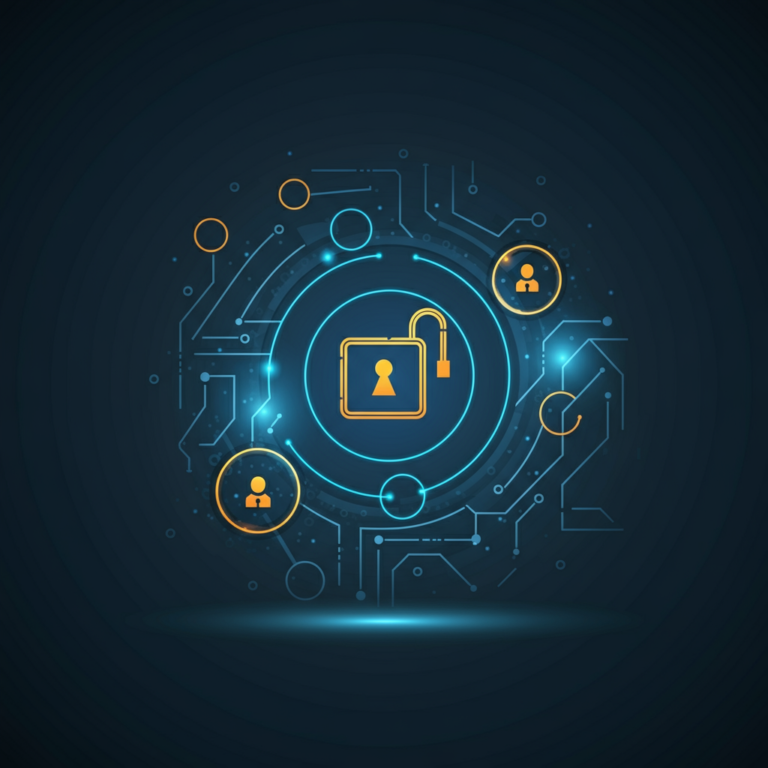Blockchain security is an important factor. From transforming banking to upsetting supply chain management, blockchain technology has been causing waves in many different sectors. Its distributed character and openness point to a day when coding imposes trust and minimises intermediaries. However, these developments also raise an even more urgent issue: blockchain security. Everyone engaged in blockchain development, investment, or adoption should know the weaknesses of even the most creative solutions.
This blog will examine blockchain architecture, the most common security risks, and methods of safeguarding this ground-breaking invention. In conclusion, you will have more excellent knowledge of the security scene of blockchain and practical ideas.
Describe blockchain and explain why it matters.
Fundamentally, a blockchain is a distributed digital ledger kept on many nodes—or computers—within a network. Every block in the chain holds data, a timestamp, and a cryptographic hash of the one before it, guaranteeing that the recorded data stays tamper-proof and safe.
The technology’s distributed architecture replaces dependence on single points of control, such as authorities or financial institutions. This has clear appeal in settings like cryptocurrency, where blockchain supports systems like Bitcoin and Ethereum. Apart from cryptocurrencies, blockchain uses span digital identity management to healthcare record-keeping.
However, as blockchain use rises, its weaknesses start to attract attention from hostile players. Whether your interests are in technology or cryptocurrencies, negotiating this exciting field depends on knowing blockchain security.

Blockchain Technology: Its Mechanism
Understanding blockchain operations helps one to address security issues using knowledge:
- Decentralisation
Blockchain runs without central authority, unlike more conventional systems. Nodes verify transactions, guaranteeing that no one entity dominates the network.
- Transparency
Every network member has ledger access, improving responsibility. Once a transaction is entered into the record, it is unchangeable and cannot be undone backwards.
- Cryptographic Security
Blockchain guarantees transactions by using cryptographic hashing. This guarantees data integrity, so blocks cannot be changed without destroying the whole chain.
- Consensus Mechanisms
Blockchains use consensus systems, such as Proof of Work (PoW) or Proof of Stake (PoS), to confirm transactions. These systems guarantee that only honest players may add blocks to the chain.
Blockchain systems have strong characteristics, although they are not naturally impervious to attacks. Their architecture, consensus systems, and developer competency significantly affect their security.
Typical Blockchain Security Challenges
Although decentralisation and cryptographic security could strengthen a blockchain, some risks still loom. Here are some of the more obvious difficulties:
1. 51% Strikes
One entity may control transactions when it controls 51% of a network’s mining capability. Attackers could spend bitcoin twice or prevent fresh transactions from being verified.
For instance, in January 2019, Ethereum Classic suffered a 51% assault when hostile miners acquired control and could double-spend around $1.1 million worth of cryptocurrencies.
2. Attack Routing
Data sent by internet service providers (ISPs) forms the foundation of blockchain systems. Attackers cause interruptions by intercepting data during transmission, isolating nodes, or delaying the spread of transactions.
3. Weaknesses in Smart Contracts
Smart contracts are self-executing agreements included on the blockchain. Should a code be destructive, hackers may find use for them. Backdoors, logical errors, or unbridled inputs could cause financial losses.
For instance, the notorious DAO hack in 2016 used a flaw in Ethereum’s smart contract to cause more than $60 million in damages.
4. Sybil Attacks
Attackers establish many identities or nodes to flood the network, lower its dependability, and disturb consensus systems.
5. Phishing Notes
Human mistakes cannot be explained even by the most safe technologies. Targeting consumers, phishing attempts fool them into disclosing private keys or credentials via phoney websites or emails.

Best Practices for Secure Blockchain Development
Investing in blockchain security is a confidence-building exercise as much as a technological need. Developers and companies may guarantee more safe blockchain solutions as follows:
- Run frequent security audits.
Employing outside security companies to examine your blockchain architecture aids in the early discovery of weaknesses before unwelcome players enter the picture. Key are regular code reviews and vulnerability testing.
- Apply multi-factor authentication (MFA).
Layers of user identification verification help to lower the possibility of illegal access to blockchain technologies.
- Utilise Tested Smart Contract Libraries
Use open-source libraries with peer reviews, like OpenZeppelin, for Ethereum smart contracts. Do not reinterpret the wheel unless absolutely necessary.
- Track and Update the Network
Blockchains change, and so do the strategies used by malevolent actors. Frequent updates and monitoring help remedy discovered flaws and reduce new risks.
- Help Users
Still, human error is the biggest source of blockchain-related breaches. Provide strong instructional tools that enable consumers to choose optimal practices, identify phishing efforts, and safely access wallets.
Real-world Hacks and Vulnerabilities: Examples
Actual events show the consequences of blockchain weaknesses:
Mt Gox Hack (2014):
Once the most significant bitcoin exchange, Mt. Gox had a terrible incident wherein 850,000 Bitcoins were stolen, underscoring the necessity of improved security in exchanges.
Ronin Network exploit (2022):
$600 million was lost from Ronin, Ethereum’s sidechain for Axie Infinity via a bridge breach. This hack exposed the dangers of improperly locked cross-chain systems.
Every one of these well-known events teaches and reminds us of the consequences of insufficient security policies.
What comes next? Blockchain Security’s Prospect
Blockchain security’s future will probably rely on technical developments and legal frameworks. Here are some developing trends:
- DIDs, or decentralised identifications:
DIDs seek to empower consumers regarding their blockchain identities, lowering dependence on centralised systems that are vulnerable to leaks.
- Artificial intelligence (AI)
Using pattern analysis in blockchain networks, AI will help forecast and avoid security weaknesses.
- Quantum-resistant Crypto:
Blockchains’ cryptographic systems must change to resist quantum assaults since quantum computing is only around here.
- Guidelines and Policies:
Industry groups and governments are developing rules requiring essential security criteria.
Blockchain Revolution Securing:
Blockchain technology may completely rethink data management, financial transactions, and trust standards. Still, its success will rely on our ability to handle security issues. Understanding shared risks, implementing best practices, and learning from significant events will help us better defend blockchain networks and their users.
Staying current and proactive about blockchain security is no longer optional for both developers and investors. It determines the course of this innovative technology going forward.
Conclusion
Blockchain technology provides decentralisation, efficiency, and openness that is changing sectors. Still, its expansion is grounded in our ability to protect it from new dangers. Essential actions in guaranteeing a safe blockchain future include addressing vulnerabilities, implementing strict security policies, and encouraging cooperation among stakeholders. Developers, consumers, investors, and developers help create a strong ecosystem by prioritising education and proactive initiatives. Blockchain networks’ security is not just technological; it’s a shared obligation that will determine the dependability, adaptability, and lifetime of this innovative idea. Blockchain security promises to transform power.




